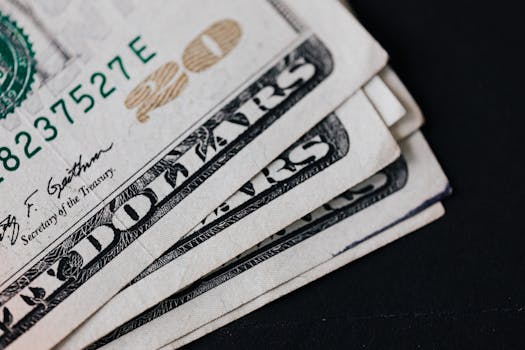Personal finance
How to Plan Major Purchases Without Debt: A Practical Guide for Smart Decisions
Learn practical ways to plan major purchases without falling into debt. Smart steps for budgeting, saving, and timing big buys—keeping you in control and stress-free every time.
Advertisement
A big purchase can feel like a mountain on your financial path. Even thinking about how to plan major purchases can spark both excitement and anxiety, especially if you want to avoid debt.
Making costly choices—from cars to appliances—matters for your financial health and your peace of mind. A smart approach helps you enjoy your purchase without regret, worry, or monthly bills.
If you want strategies to plan major purchases without adding debt, you’re in the right place. Dive in for concrete steps, checklists, and scenarios you can use right away.
Building a Clear Purpose for Your Purchase Gives You Direction
Before you get caught up in sales or marketing hype, pause to define exactly what you want and why. Clarity here streamlines all future decisions in your plan major purchases journey.
Write down your core reason. Are you replacing something broken or seeking an upgrade? Do you need this now, or is it a want? Having your answer serves as an anchor for future choices.
Identifying Your True Needs Saves Future Regret
Jot a quick list of what you absolutely need from the purchase. If you’re shopping for a car, maybe safety ranks higher than appearance. This honest list keeps your spending intentional.
Picture yourself telling a friend, “I’m looking for a fridge that lasts, not that just looks flashy.” That mindset leads to long-term satisfaction with your plan major purchases.
After you make this list, use it as your non-negotiable guide when you start product research and sift through deals or upgrades.
Setting a Realistic Price Range Prevents Overstretching
Set a top-dollar amount you’re genuinely comfortable with. Imagine yourself saying, “My limit is $1,200 and I won’t go higher.” This line in the sand protects your savings.
Compare that ceiling to the average cost of your desired item. If high-end models shock you, adjust your expectations or allow more saving time before you buy.
Revisit your priorities to ensure you’re paying for needs, not marketing extras. Stay honest about comfort versus splurge in your plan major purchases process.
| Step | Why It Matters | Example Question | Next Action |
|---|---|---|---|
| Define Purpose | Helps you focus spending | “What do I want from this purchase?” | Write down your goal |
| List Needs | Keeps value in mind | “What features must I have?” | List top 3 priorities |
| Set Price Limit | Prevents overspending | “What’s the highest I’ll pay?” | Choose limit and stick |
| Research Options | Finds best fit | “Where can I compare prices?” | Collect 3 options |
| Review Impact | Checks overall finances | “How will this affect my budget?” | Update budget before buying |
Using Structured Saving Keeps Your Money Safe for Major Buys
Developing a dedicated savings routine ensures you accumulate funds without leaning into debt. Structure makes your plan major purchases efforts effective and stress-free.
Start with the timeline you set—do you need this in six months, a year, or longer? Pick an account or envelope for your savings goal so money can’t accidentally get used elsewhere.
Automate Incremental Savings to Stay Consistent
Use direct deposit or scheduled transfers to carve out money for your purchase every payday. Automating removes the temptation to skip weeks, keeping your plan major purchases on track.
Apps and bank tools can split your paycheck as soon as it arrives. Try a recurring “payment to self” just like you’d pay a bill. Each auto-deposit builds your fund.
- Set up an automatic monthly transfer: pick a sum based on your goal and pay schedule. Consistency turns small amounts into big results over time.
- Use a dedicated savings account: separate it from your everyday checking to lower the odds of accidental spending or “borrowing” for routine emergencies.
- Label your goal in your bank’s app: try naming the account “New Laptop Fund” so you always see the purpose and stay motivated toward your plan major purchases.
- Check your savings progress monthly: seeing growth encourages you to stay committed and might push you to save extra when possible.
- Increase your transfer if income rises: if you get a raise or bonus, boost your regular deposit to accelerate your time frame for the big buy.
Tracking your auto-savings makes it tangible. You build momentum and motivation as you get closer to your plan major purchases total.
Combat Impulse Spending with Barriers and Rules
Set out rules that make it harder to dip into your major purchase fund for random treats. A 48-hour cooldown before transfers helps prevent regret-driven decisions and protects your plan major purchases.
Turn off instant transfers for your savings account if your bank allows. By making withdrawals inconvenient, you reinforce patience and future-mindedness as positive financial habits.
- Establish a spending freeze: during your saving period, avoid buying similar items that distract from your big goal. Keeps your focus on the target.
- Require a second review for withdrawals: ask a partner or friend to double-check any decision to dip into your big-purchase fund.
- Set real consequences: for example, each unnecessary dip delays your purchase date by exactly one month.
- Visualize your goal with reminders: keep a photo or note where you see it daily. Every reminder reinforces staying the course.
- Celebrate milestones: once you save half, treat yourself in a small, healthy way to reinforce progress without jeopardizing the plan.
The more friction you add between yourself and impulse dips, the sturdier your plan major purchases fund becomes—ready for the moment you need it.
Balancing Needs with Wants Strengthens Financial Boundaries
Discerning between essentials and extras avoids waste and lets you maximize satisfaction from your big buy. Honesty in this part of speaking about plan major purchases preserves both your money and your peace of mind.
Sorting Essentials First Limits Extras
List absolute requirements versus “nice-to-haves.” A family might say, “We need seating for five, not heated seats.” Essentials come first in your budget lineup for plan major purchases.
Physically sort product specs or features by underlining must-haves. Leave luxuries in a separate column. When shopping, hold firm to your essentials before adding any upgrades.
Run each extra through your original priorities list. If it doesn’t pass, exclude it with the phrase, “Not needed for us.” This script keeps your decision-making disciplined.
Upgrades and Tempting Extras: Rule in or Out
Suppliers and salespeople use special features to nudge buyers. Pause and ask yourself, “Would I still want this if it cost 30% more?” Use this as a gut-check when planning major purchases.
Think about your past buying experiences. Did previous splurges genuinely improve your happiness or gather dust over time? Let your actual history shape your current choices.
If multiple people are involved, let everyone suggest one fun feature but agree that core needs must stay the focus. This “one fun pick” rule brings fairness and structure to wish lists.
Timing Your Purchase for Sales and Savings Builds Buying Power
The timing of your plan major purchases carries huge financial weight. Well-timed buys can net you substantial savings or bonuses—if you’re strategic and patient with your approach.
Seasonal Shopping and Price Alerts as Strategic Tools
Major items have sales cycles—appliances drop in price when new models launch; electronics see discounts during big holiday events. Use a price tracker to alert you when items dip.
Set up an alert by searching for “price drop notification” features on retailer sites. When the price hits your target, pause to double-check your original budget before buying.
Keep a “waiting list” of items you’re considering. When a deal comes up, ask: “Does this fit my plan major purchases timeline?” If not, wait. Letting sales dictate your buy can cost more later!
Negotiation and Bundling for Better Value
Don’t skip negotiation, especially for big retail or secondhand buys. For example, you might say, “Would you match this competitor’s price?” Pairing items for a bundle discount saves more.
If you’re upgrading appliances, ask if the store offers package deals or service add-ons for free. These perks make sticking to your plan major purchases budget easier.
Practice phrasing like, “Is that your best offer?” or “Can you include delivery?” Firm but friendly negotiating often unlocks hidden value or last-minute savings, especially for expensive items.
Carrying It Forward: Make Smart Purchases Your Long-Term Habit
The steps in this guide put control firmly in your hands for future big financial moves. When you’ve used these methods to plan major purchases, your confidence will grow with each successful buy.
Being proactive—saving, organizing, prioritizing—pays off by keeping debt away and adding stability to your finances. With each experience, your process becomes quicker and more natural.
Save this article or make a checklist for the next time something big looms. Each well-planned purchase builds your security, mindfulness, and ability to enjoy what you buy, long after the excitement fades.





